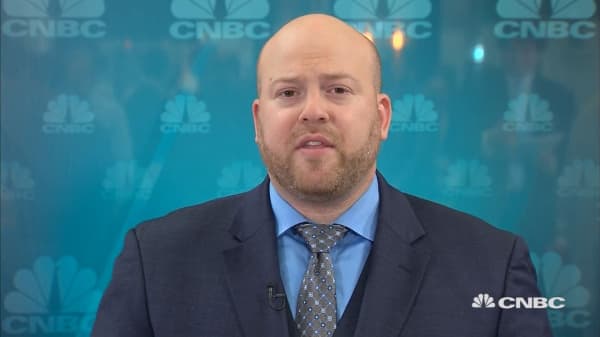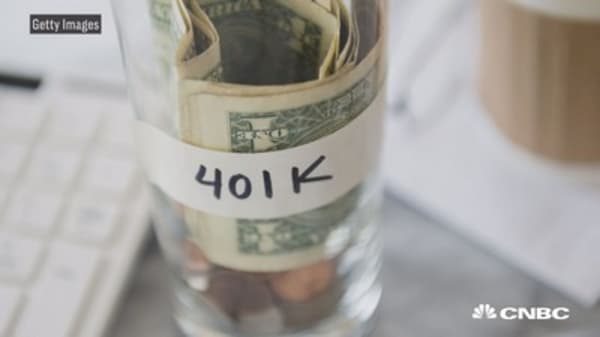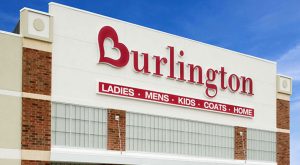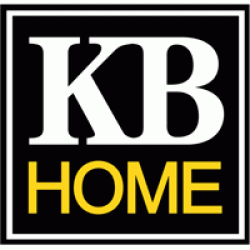
Image source: The Motley Fool.
Heritage Insurance Holdings Inc (NYSE:HRTG)Q4 2018 Earnings Conference CallFeb. 28, 2019, 8:30 a.m. ET
Contents: Prepared Remarks Questions and Answers Call Participants Prepared Remarks:
Operator
Good morning, and welcome to the Heritage Insurance Holdings Fourth Quarter 2018 Financial Results Conference Call. My name is Keith and I will be the operator today. At this time, all participants are in listen-only mode. A brief question-and-answer session will follow the formal presentation. Please note this event is being recorded.
I now would like to turn the conference over to Arash Soleimani, Executive Vice President at Heritage. Please go ahead, sir.
Arash Soleimani -- Executive Vice President
Good morning, and thanks for joining us today. We invite you to visit the Investors section of our website, investors.heritagepci.com where the earnings release and our earnings call will be archived. These materials are available for replay or review at your convenience.
Today's call may contain forward-looking statements within the meaning of the Private Securities Litigation Reform Act of 1995. These statements are based on management's current expectations and are subject to uncertainty and changes in circumstances. In our earnings press release and in our SEC filings we detail material risks that may cause our future results to differ from our expectations. Our statements are as of today and we have no obligation to update any forward-looking statements we may make. For a description of the forward-looking statements and risks that could cause our results to differ materially from those described in the forward-looking statements, please refer to our annual report on Form 10-K, earnings release and other SEC filings.
With us on the call today are Bruce Lucas, our Chairman and Chief Executive Officer; and Kirk Lusk, our Chief Financial Officer.
I will now turn the call over to Bruce.
Bruce Lucas -- Chairman and Chief Executive Officer
Thank you, Arash. I would like to welcome all of you to our fourth quarter 2018 earnings call. Before we begin the call, I'd like to thank all of our employees for their dedication to our Company. The fourth quarter was very active on several levels. Most notably Hurricane Michael made landfall in the Florida Panhandle as a high category 4 Hurricane. Michael had devastating impacts to the Panhandle and decimated entire communities.
Heritage has very stringent underwriting criteria and we never focused on Panhandle business, because we thought the building codes were not adequate with far too many older frame construction homes. As a result, our loss experience on Michael is among the best in Florida and our incurred loss is $33 million. Contractors Alliance Network or CAN once again prove that Heritage has a superior claims model. CAN was our first response to Michael and we were responding to claims immediately after landfall. CAN removed trees, tarped roofs and mitigated water damage. These efforts reduced losses for our reinsurance partners and provided much needed assistance to our policyholders.
Most claims are closed and we are not seeing much activity related to Michael at this time. We booked a full second event retention of $16 million in the fourth quarter, but our third-party reinsurance tower was only minimally impacted. Similarly, our Hurricane Florence losses continue to outperform modeled loss estimates due to our stringent underwriting and CAN response. While other insurers focused on the North Carolina coast, we focused on inland counties, they have significantly lower hurricane volatility and lower reinsurance pricing.
In the fourth quarter, we marginally increased our ultimate loss pick to $23 million from $20 million as of the third quarter of 2018. This modest increase resulted in an incremental $0.5 million of net retention in the fourth quarter. Virtually, all claims are closed and there was very little activity related to Florence. Similar to Michael, Florence minimally impacted our third-party reinsurance tower, which is a testament to our prudent underwriting. Our third hurricane event, Hurricane Lane is essentially closed and has an ultimate loss of approximately $400,000, which is lower than our previously disclosed $600,000 loss estimate.
Our loss experience on our Hawaii portfolio is perhaps the most impressive. Lane should have produced large losses, yet it produced virtually no losses at all. This is a real testament to our underwriting discipline. Our underwriting guidelines and superior claims model are also benefiting our attritional losses. In 2016, we believe we were the first major Florida insurer to announce an underwriting moratorium in the Tri-County area, which is particularly prone to fraud public adjusters and attorney representing claims. Our decision was contrarian, but we chose to focus on bottom line profitability versus top line growth.
We also believe, we were the first to address the impact of litigated claims on our loss reserves. As we mentioned at the second quarter of 2018, we conducted a thorough review of our reserves, especially in the context of litigated claims. This led to a charge in the second quarter. But, since that time, we have experienced favorable reserve development in both the third and fourth quarters of 2018. We believe our underwriting and reserving initiatives position us to generate solid returns while tempering risk for our equity investors in reinsurers. Although, Heritage is not the largest insurer in our sector and certainly does not have top market share in Florida's Tri-County. As of the third quarter of 2018, our statutory loss reserves were the highest among the publicly traded Florida insurers on an absolute dollar basis.
Our conservative reserving philosophy is critical to reducing underwriting volatility in future quarters and provides a more stable equity platform. We also closed on a comprehensive debt restructuring in the fourth quarter that will benefit shareholders for the foreseeable future. Heritage has an investment grade rating from Kroll that was instrumental in our restructuring efforts. We retired our $79.5 million term loan and $75.9 million of principal related to our convertible bonds.
In total, we retired $155.4 million of debt and replaced it with $114.2 million of new debt on substantially better terms, resulting in over $7 million of pre-tax savings annually. Furthermore, subsequent to the fourth quarter of 2018, we retired an additional $5.8 million of convertible bond principal and $10 million of revolving line of credit principal. Currently only $23.4 million of principal amount of our convertible bonds is held by third parties down meaningfully from $136.8 million in the third quarter of 2017.
Our financial leverage ratios, significantly lower year-over-year and our capital position is the strongest it has been in several years and we intend to use earnings to further reduce our outstanding debt. During the quarter, we recorded $11.3 million of non-core pre-tax expenses related primarily to our 2018 debt restructuring transactions and $17.7 million in current accident year catastrophe retentions and still produce $3.9 million of net income in the quarter.
For the full year, Heritage performed incredibly well. We booked $27.2 million in net income and achieved a 7% return on equity, despite retaining $45.1 million of pre-tax net catastrophe losses across our multistate footprint and $17.9 million of non-core pre-tax expenses. Additionally, our net combined ratio for 2018 was an impressive 90.4% aided by strong performance within CAN. It is no secret that Heritage has led the market in derisking Tri-County exposures due to fraud and abusive practices by public adjusters and attorneys.
These policies have the highest premiums in the United States and derisking them has -- had only a marginal negative impact on our top line with a large positive impact on our bottom line profitability. We have been laser-focused on diversifying outside of the Tri-County and the state of Florida for several years. These policies have lower premiums than those in the Tri-County. But, despite the pricing differences, our gross premiums in force, only declined by a modest 2% year-over-year in the fourth quarter, because our voluntary program has continued to deliver.
We believe, we have the best diversification among the Florida insurers and as of year-end 2018, we only had 32% of our total insured value or TIV in Florida, and we believe the number will be 29% in 2019. Our personal lines TIV and the Tri-County area of Florida is only 5.5% of consolidated TIV at year-end. This peer-leading diversification means we have a much more stable platform with less volatility. We expect our diversification to continue into 2019. We recently began writing business in Alabama and Georgia and will begin writing business in Virginia and Maryland later this year.
Additionally, we are very appreciative of our strong strategic partnerships that will continue to drive additional premium growth. Our most recent partnership with Safeco Insurance, a Liberty Mutual Company is particularly meaningful. Our two companies will combine forces to provide bundled discounts to our home and auto customers in northeast coastal zones. We are very honored to have a company with Safeco stature and reputation to select Heritage as its coastal homeowners partner.
I will now turn the call over to Kirk Lusk to provide more details on our financials.
Kirk Lusk -- Chief Financial Officer
Thank you, Bruce. Good morning. Net income for the quarter was $3.9 million, which was an increase of $9 million from the fourth quarter of 2017 loss of $5 million. The fourth quarter of 2018 was negatively impacted by Hurricane Michael and also the costs associated with the refinancing efforts, partially offset by our CAN profits. Although, the fourth quarter of 2017 did include minimal storm activity, it was significantly impacted by a $34.1 million non-cash, non-core charge associated with the convertible notes.
Net income per diluted average share for the quarter was $0.15 and $1.04 for the full year of 2018. For the full year of 2018, net income was $27.2 million compared to a loss of $1.1 million in 2017. Absent the $42 million of non-cash charge associated with the convertible notes in 2017, net income for the full year of 2017 would have been $41 million. For the fourth quarter of 2018, gross premiums earned were up 28% over the fourth quarter of 2017, due to a full quarter of NBIC revenues, which were partially offset by planned reductions in the Heritage portfolio.
Net earned premiums for the quarter were up 17% again reflecting the same ratio now as the increase in gross earned premiums, but a lower growth rate due to the larger ceding percentage at NBIC. Losses for the quarter were $14.9 million higher than the fourth quarter of 2017 and resulted in a net loss ratio higher in the fourth quarter of 2018 by 6.3 points. The loss ratio variance can mostly be explained by the storm retention during the fourth quarter of $17.7 million, which includes $1.4 million of storms in the Northeast, which were partially offset by favorable development in the quarter of $1.3 million and profits generated from CAN.
The fourth quarter of 2017 had minimal CAT storm activity, but did experience $11 million of adverse development and headcount profits, but to a lesser extent than 2018. In addition, the net loss ratio at NBIC impacted the overall loss ratio by around 2 points due to the higher ceded premium percentage. We are very comfortable with our reserve position, which has been confirmed by the positive development that we experienced in both the third and fourth quarters of 2018.
The net and gross expense ratios are favorable compared to year-end 2017, due mostly from the ceding commissions at NBIC which are allocated between acquisition costs and general and administrative expenses in proportion to the expenses covered by the ceding commissions. The fourth quarter of 2018 expenses were favorable to the third quarter of 2018 due to the $7 million one-time charge in the third quarter previously disclosed and from the fourth quarter of 2017 due to higher ceding commissions being allocated to G&A for the full quarter of NBIC in 2018.
Overall, we achieved a 90.4% net combined ratio for 2018, which is in line with our future expectations. The effective tax rate for the quarter was 41% reflecting the low pre-tax net income combined with permanent tax differences. One of the objectives in 2018 was to reduce the cost of existing debt while also adding flexibility to the capital structure. We had several financing options available and elected to go with the syndicate of banks, as we believe that would provide the most flexibility and long-term benefit to shareholders. Although we are currently focusing on organic growth, we wanted to be prepared to pursue any opportunities that could arise in the future. As those opportunities arise, we wanted to have the flexibility to utilize a prudent amount of debt financing instead of relying (ph) upon the issuance of equity or using all available cash.
We believe that the syndicate of banks provides us with the long-term flexibility and we are very appreciative of Regions for being our lead bank and the rest of the syndicate banks for their support and commitments. Book value for the year increased from $379.8 million to $425.3 million, an increase of $45.5 million or nearly 12%. Tangible book value increased by $70 million, an increase of 56% from $125.7 million at the end of 2017 to $196 million at the end of 2018, reflecting both the income generated in 2018, the amortization of intangible assets and the equity associated with the issuance of shares.
Tangible book value per share increased from $4.86 per share at year-end 2017 to $6.65 per share, an increase of 37%. Total book value per share decreased by 20% or 2% from year-end 2017. From the third quarter of 2018, the book value increased by $34.8 million, however, we also issued 3.6 million shares associated with the purchase of $76 million of convertible notes in the fourth quarter. The overall impact of the convertible note repurchased decreased book value by $0.96 or 6% of the pre-purchased book value per share.
Despite the initial decrease in book value per share the transaction should yield long-term benefits. The transaction reduced the amount of short-term positions in Heritage stock and by purchasing the stock at the current stock price and bond price, we are able to reduce the future cost and the larger dilution as the stock price increases. Overall, we have had a very productive year at Heritage as we launch new products, entered new states for new partnerships, strengthened our reserves and revised our capital structure to a lower cost of capital and to add flexibility. Overall, we believe that we are well positioned as a super regional insurance carrier to deliver solid financial returns for our investors over the long term.
Bruce and I are now available to take your questions.
Questions and Answers:
Operator
Yes. Thank you. We will now begin the question-and-answer session. (Operator Instructions) And the first question comes from Frederique Sleiffer with KBW.
Frederique Sleiffer -- KBW -- Analyst
Hi, good morning.
Bruce Lucas -- Chairman and Chief Executive Officer
Good morning.
Kirk Lusk -- Chief Financial Officer
Good morning.
Frederique Sleiffer -- KBW -- Analyst
So firstly, I was wondering if you could provide us with an update on your gross Irma and Michael losses and are you still seeing lot of claims coming in for Irma and are any of these being litigated?
Bruce Lucas -- Chairman and Chief Executive Officer
Yeah. So our Irma update right now are incurred losses approximately $900 million. It's been holding fairly steady for quite some time now. We are seeing new claims come into this day everybody in Florida is but it's very modest, we're maybe getting 125 to 150 claims a month at this point. The number keeps dropping every month as we get further away from Irma. We do have some litigated claims out of our open claim count right now. We've got about 2,000 open claims to say approximately half of them are represented by an attorney. Again, that is incredibly low for the Florida market. So we are seeing some continued development on Irma but it's just nothing that we're really seeing in terms of an acceleration of adverse development.
Frederique Sleiffer -- KBW -- Analyst
Okay, great. And although this wasn't really an issue this quarter but you guys did have some adverse AoB development before and you did underestimate the Irma loss is quite a bit. What plans do you currently have in place to improve your ability that make these catastrophes and attritional losses more accurately?
Bruce Lucas -- Chairman and Chief Executive Officer
Right. Well, on the Irma side, I would disagree that we underestimated the Irma loss. We were very clear to our markets that the modeled median loss was x dollars. That number was between $550 million and $600 million. We came out with that modeled loss estimate right after Irma, let's call it, within six months of landfall. Once we had actual experience we were the first Florida Company to massively increase our loss reserves to $850 million.
Since that time, it has developed to about $900 million of incurred losses and what we're seeing in the market in that same time period our Company is doubling and tripling loss estimates, because they kind of in this missed the mark very early on and did mark the book early. In terms of our daily claims, we have absolutely called this one correct. We've been saying for years that Florida companies simply are under reserved and they have too much Tri-County business in their portfolio, which makes them incredibly risky and volatile. So we led the market three years ago in pulling out of the Tri-County, we're the first major Florida carrier to announce that moratorium.
Since that time, our open Tri-County inventory has plummeted, open lawsuits have also declined meaningfully and we're seeing positive reserve trends across the portfolio right now, two quarters in a row of favorable development and I think more importantly, you can just see it in the stats. So if you look at year-over-year 2017 to 2018 we had a 39% reduction in new Tri-County claims. And overall in the Florida portfolio, we had a 19% reduction in claims.
Yet we were the first Company to increase our loss reserves, and as of the third quarter of 2018, we had more loss reserves in any other Florida carrier. So I think we've been extremely proactive on both fronts, especially the daily claims. You're just not going to see the massive reserve development in our portfolio that you've seen, let's just say announced recently.
Frederique Sleiffer -- KBW -- Analyst
Okay, great. Thank you. And then just moving on to reinsurance, what percentage did you renew your Florida Hurricane Cat Fund participation at, and how is risk adjusted pricing year-over-year on your private layer alongside the Cat fund?
Bruce Lucas -- Chairman and Chief Executive Officer
So, we are still in market right now for the private layers. That process has been taking place over the past month. We still have another month or two before we'll wind up the reinsurance tower. So I can't comment on what our private label expenses are, because we have in place the program. On the FHCF we went to a 90% average FHCF participation. In my opinion I do believe you're going to see most of the Florida carriers move to a minimum of 75% to 90% across the Board due to uncertainties around reinsurance pricing.
So when we do the math on that, if everybody went to 90% which I suspect will be the norm, that's about $3 billion of open market capacity that would normally go to the private market that will be sucked out as a result of the 90% participation across Florida. We think that will have a very, very positive impact on reinsurance pricing as we move throughout this program here.
Frederique Sleiffer -- KBW -- Analyst
Okay. You were at 45% before, right?
Bruce Lucas -- Chairman and Chief Executive Officer
Correct. Our position prior was that, you should use the Cat fund as a hedge and so if reinsurance rates are incredibly low and you can bind a private layers at or below the Cat fund cost you should go to 45% and then use the Cat fund at 90% in the event that there is a hardening event in the reinsurance market that could potentially move rates higher. By going from 45% to 90% we're locking in reinsurance pricing at an incredibly modest rate increase compared to what is potentially out there in the private market. So, it serves as a pretty big hedge on year-over-year price increases for the reinsurance tower.
Frederique Sleiffer -- KBW -- Analyst
Okay. Great. And then, I was just wondering on your Safeco relationship, how much premium did that generate for you right now and also, do you expect the partnership spread outside of, I believe you said, it's just east coastal right now?
Bruce Lucas -- Chairman and Chief Executive Officer
Yes. So, we just launched the program. So, there is no premium update. I mean, the program just went in to the market. Yes, it's in the northeast coastal zones for now and then we'll see how that relationship develops over time.
Frederique Sleiffer -- KBW -- Analyst
Okay. And then just one last question, how much were your CAN revenues this quarter? And has it picked up since Florence and Michael?
Bruce Lucas -- Chairman and Chief Executive Officer
Yes. So, CAN -- we really look at CAN, first of all, we don't break out separately CAN revenues, this just part of our claims group. That's proprietary information to us, other Florida carriers are more than welcome to try their hand at building out the network that we've done over the last seven years. So, we don't report those numbers separately. However, we do view CAN as a profit center in lowering daily losses, for example. If we can get out to a water loss and we can service the policyholders, stop environment of benefit or a public adjuster, that obviously saves the Company money that is a profit center for the organization. And we've been very successful on the daily claims in getting to these losses quickly and you're seeing that in terms of a positive reduction in year-over-year water claims, costs, reserve charges, you see favorable development across the portfolio. It's been highly successful for us and it is an absolute differentiator in terms of managing the daily losses.
And then in catastrophe events, we really view CAN as a way to reduce the total incurred loss on the event. So, we can get out of the house quickly tarp a roof, remove the tree, dry it out, et cetera and we're stopping third party bad actors (ph) from entering the home, it reduces our reinsurance retention. So, take Hurricane Florence for example, a lot of the models were saying that we should expect the $60 million to $80 million ultimate loss on Florence. Our ultimate loss right now stands at $23 million, 99% of the claims are closed. And I think we had 10 claims last month and a big reason for the outperformance was our initial response from Contractors Alliance Network. So, it does serve as a very effective hedge and CAT years and it's a continuing hedge in terms of claims management.
Frederique Sleiffer -- KBW -- Analyst
All right. Great. Thank you very much for the answers.
Bruce Lucas -- Chairman and Chief Executive Officer
Thank you.
Operator
Thank you. And the next question comes from Tom Shimp with Sandler O'Neill.
Thomas Shimp -- Sandler O'Neill -- Analyst
Hi, guys. Good morning.
Bruce Lucas -- Chairman and Chief Executive Officer
Good morning.
Thomas Shimp -- Sandler O'Neill -- Analyst
First question, has to do with the accounting. The Company reports a net income number that doesn't adjust for non-recurring items. Other guys reported an adjusted operating earnings number, what do you guys not and do you intend to in the future?
Bruce Lucas -- Chairman and Chief Executive Officer
Well, we do have an operating income, which I guess if you look at the income statement, you can look at the interest expenses net of non-operating expenses. So, from our view is like I think even looking at it from a GAAP perspective, you can get there. We also think that going forward there, the number, non-operating items, we expect to be relatively minimal. So, therefore, that is why we have at this time, even though there were a number of them, but going forward, we just don't expect there's going to be significant amount.
Thomas Shimp -- Sandler O'Neill -- Analyst
Okay. Fair enough. And then I just wanted to ask another question about the expense ratio. I believe on the second quarter call you guys provided a guidance of 40% to 41%, does that still hold true or do you have a revised estimate since it came in a bit below that in 2018?
Bruce Lucas -- Chairman and Chief Executive Officer
All right. Then you're referring to the -- the gross?
Thomas Shimp -- Sandler O'Neill -- Analyst
I believe it was the net expense ratio guidance, 40% to 41%.
Bruce Lucas -- Chairman and Chief Executive Officer
Yeah, it's going to be probably right around the -- I think when we look at some of the synergies and some of the things that's we're doing with the integration, I think probably right around the 40%, it would probably be about right.
Thomas Shimp -- Sandler O'Neill -- Analyst
All right. That's all I had. Thank you.
Bruce Lucas -- Chairman and Chief Executive Officer
Thank you.
Operator
Thank you. And the next question comes from James Naklicki with Citi.
James Naklicki -- Citigroup -- Analyst
Yeah. Thank you. Good morning, guys. My question was on the -- the expected reduction to debt in the future, you said, you'd be using earnings to reduce that number. So, I was curious what you envision the debt to capital would be at the end of 2019? Then I have a follow-up. Thank you.
Bruce Lucas -- Chairman and Chief Executive Officer
Yeah, James. We haven't really modeled what we think that debt to cap ratio is going to be at the end of 2019. Obviously, we've had a massive reduction in our debt to cap ratio over the past 12 months and significantly improve the capital position for shareholders. Our comment is more along the lines of -- we do expect strong earnings from Heritage in 2019. And we've had pretty consistently strong earnings across a very volatile market over the past several years. I expect will probably come in second again in Florida in terms of net income. We have sources and uses of that capital and the uses of it, we're really going to focus on debt reduction and potentially share repurchases. So, both of those things are on the table. We do have an outstanding share repurchase authorization that's in place, and we're going to analyze the opportunities on a quarter-over-quarter basis and just make the right decision long-term for shareholder returns.
James Naklicki -- Citigroup -- Analyst
And then, what was the unrestricted cash balance at the end of the year for the Company?
Bruce Lucas -- Chairman and Chief Executive Officer
$250 million is the number.
James Naklicki -- Citigroup -- Analyst
Is that at the parent Company?
Bruce Lucas -- Chairman and Chief Executive Officer
Our restricted -- restricted cash or unrestricted cash?
James Naklicki -- Citigroup -- Analyst
Unrestricted -- unrestricted, yeah, cash at the parent, I'm looking for.
Kirk Lusk -- Chief Financial Officer
He wants the parent.
Bruce Lucas -- Chairman and Chief Executive Officer
We have it on a consolidated basis, we'll pull that number up for you, James. Yeah.
James Naklicki -- Citigroup -- Analyst
Okay. Thanks.
Bruce Lucas -- Chairman and Chief Executive Officer
Sure.
James Naklicki -- Citigroup -- Analyst
Yeah. We can follow-up offline, that's fine.
Bruce Lucas -- Chairman and Chief Executive Officer
Yeah. Thank you.
Operator
Thank you.
James Naklicki -- Citigroup -- Analyst
That's all I had.
Operator
Okay, thank you. And as there are no more questions at the present time, I would like to return the floor to management for any closing comments.
Bruce Lucas -- Chairman and Chief Executive Officer
Yes, thank you. I think there are two issues, I would like to touch upon that were not in my earnings script. First, is loss reserves. I do think, it's important for investors to understand, what we've been doing and why we've been leading the market on this point. I mentioned earlier that three years ago, we took a look at claim activity in the Tri-County and made a very bold decision to significantly reduce our exposures there. Since that time we have dropped our total insured value in the Tri-County by $15 billion. That easily ranked as number 1 in Florida in terms of Tri-County derisking and during that same time period, we have consistently come out and marked our loss reserves higher as we move forward, reflecting our conservative reserving position.
We believe the combination of these two activities have really positioned us well for future performance of the Company. We're seeing a lot of companies as predicted report significant adverse development across their portfolios, and it's no secret that those Companies have lower loss reserves and higher market shares than Heritage. So as a result, we do want investors to know that we believe that we are on very strong footing with our loss reserves. We have had three or four independent actuaries come in and review our numbers over the past two quarters, just to make sure that our numbers are validated and reliable.
So far, everything looks pretty stable and we're seeing a massive reduction year-over-year in Tri-County claims, lawsuits, paid losses, water claims and that's not just Tri-County, that's across the state of Florida. So, we do think that we have a nice positive trend going in terms of our selective underwriting and how that translates into our loss reserves IBNR and then financial performance of the Company. The second item, I really would like to touch upon is the current reinsurance environment.
We do not know what's going to happen this year. So, I'm not going to give any predictions, but I will however note a few things that are very unique to Heritage that simply do not exist in the rest of the market. First, as mentioned, the Tri-County derisk. What has caused Irma to losses to creep higher than expected is 100% related to Dade and Broward counties and a little bit in Palm Beach county as well. So, the large losses that we're seeing out of those counties that the models did not pick up, are directly related to claims abuses, fraud, attorney represented claims and public adjuster represented claims.
As a result, companies that have higher concentrations, Tri-County total insured values are going to more than likely be marked higher on their reinsurance pricing than companies like Heritage, who have led the market in derisking. I would like to note that as of the end of 2018, our total Tri-County TIV is only 2.9% of our consolidated Tri-County. I'd be interested to hear what the other Florida carriers have in terms of their concentration, but we do believe that our industry-leading derisking plan and lower TIVs in the Tri-County area will positively influence our reinsurance pricing in 2019 as reinsurers look to distinguish between operating results on Irma between the Florida carriers.
Additionally loss adjustment expenses related to Hurricane Irma are at a record high. We have been noting for a year and a half now that loss adjustment expenses are not only at the highest levels of any storm, we've seen in Florida, but are unlikely to remain changed for two reasons. First, you had a lot of companies that just didn't have the resources to respond to Hurricane Irma. They didn't have Contractors Alliance Network that we could use as our first response. They had to pay exorbitant rates for their loss adjusters.
Second, I believe that a lot of the other companies have over-exposed themselves in the Tri-County area, which is particularly prone to public adjuster and attorney abuses. Those two items will only exacerbate through loss adjustment expenses as the loss continues to develop. In terms of our LAE in Florida, we are the lowest of all of the Florida carriers at approximately 13% versus an industry average in the 20s (ph). We do believe that reinsurers have taken note of our industry leading LAE, our deep bench, our diversification of our reinsurance portfolio. And as they look to distinguish between the Florida carriers post Irma, we believe that our industry leading efforts on these fronts will favorably impact our reinsurance pricing.
We have also taken a lot of effort to diversify our portfolio. We believe we are the most diversified Florida carrier. We have 32% of our TIV in Florida as of the end of 2018 and we expect that number to drop to 29% in 2019. And then finally, we do have reinsurance synergies that are coming into play related to the NBIC acquisition in the 2019 treaty, and we did receive approximately $17 million of synergies on the 2018 program and we are expecting somewhere between $7 million and $9 million of additional synergies in 2019. So, when you add up all of these factors, although there is some uncertainty in the market plus the FHCF election at 90%, we are not really pricing in a massive reinsurance rate increase for the 2019 program although that number could be up year-over-year in terms of absolute dollars that are spent. We do believe that there are a lot of positive mitigating factors at Heritage that do not exist with the other foreign carriers.
With that I will requeue unless (ph) to see if anyone has any questions.
Operator
Yes. Actually, we do have a question from Bill Broomall with Dowling & Partners.
Bill Broomall -- Dowling & Partners -- Analyst
Great. Thank you. Just following up on the LAE that you just kind of mentioned, when you go from the 45% to the 90%, the FHCF, obviously the FHCF has that 5% LAE cap. Just at a high level can you maybe talk about kind of how you think the industry will shake out when you kind of, are talking about renewing up the side of the FHCF given the LAE such an hot topic right now?
Bruce Lucas -- Chairman and Chief Executive Officer
Yeah. You're right, I mean, it is the hot topic and has been really since Panhandle (ph) landfall. I remember out a news interview the day after Irma and predicted 20% plus LAE in the Florida market we had, and everybody is known about it. We're at a point now where the reinsurers are going to look at the individual LAE performance of the Florida carriers and most reinsurers that I have spoken to model between 10% and 14% LAE on a normal basis.
We are at 13%. We are within the modeled range. So yes, while the FHCF only covers 5% LAE that does put some pressure on the layers alongside and above the FHCF. Our loss experience in terms of LAE on Irma is within the model ranges and it's our opinion that we should not have to pay a significantly higher reinsurance pricing based on the industry's LAE when our actual LAE leads the Florida market in terms of 13% in total.
Bill Broomall -- Dowling & Partners -- Analyst
Great. No. Perfect, thank you. And just a small point, looking into 2019, now that you have NBIC, did you -- have you seen any pickup in claims given some of the cold weather that we've had up in the northeast pipes (ph) and whatnot?
Bruce Lucas -- Chairman and Chief Executive Officer
No, we haven't really not seeing anything unusual. It's actually been a very quiet quarter in the northeast.
Bill Broomall -- Dowling & Partners -- Analyst
Perfect. Great. Well, thank you very much.
Bruce Lucas -- Chairman and Chief Executive Officer
Thank you, Bill.
Operator
Thank you. And as that was the last question, that does conclude the conference call and the question session. So thank you very much (ph) for your participation. The call is now concluded. Thank you for attending, and you may now disconnect your lines.
Duration: 39 minutes
Call participants:
Arash Soleimani -- Executive Vice President
Bruce Lucas -- Chairman and Chief Executive Officer
Kirk Lusk -- Chief Financial Officer
Frederique Sleiffer -- KBW -- Analyst
Thomas Shimp -- Sandler O'Neill -- Analyst
James Naklicki -- Citigroup -- Analyst
Bill Broomall -- Dowling & Partners -- Analyst
More HRTG analysis
Transcript powered by AlphaStreet
This article is a transcript of this conference call produced for The Motley Fool. While we strive for our Foolish Best, there may be errors, omissions, or inaccuracies in this transcript. As with all our articles, The Motley Fool does not assume any responsibility for your use of this content, and we strongly encourage you to do your own research, including listening to the call yourself and reading the company's SEC filings. Please see our Terms and Conditions for additional details, including our Obligatory Capitalized Disclaimers of Liability.
 Key tips for taking your required minimum distribution 5:17 PM ET Wed, 19 Dec 2018 | 01:22
Key tips for taking your required minimum distribution 5:17 PM ET Wed, 19 Dec 2018 | 01:22  Kristian Sekulic | E+ | Getty Images
Kristian Sekulic | E+ | Getty Images  How retirees can avoid costly required minimum distribution penalties 9:58 AM ET Mon, 4 Dec 2017 | 02:20
How retirees can avoid costly required minimum distribution penalties 9:58 AM ET Mon, 4 Dec 2017 | 02:20  WHL | Getty Images
WHL | Getty Images  Plus Inverters (investingnews.com) Ideal Power Receives 1.1 Megawatt Purchase Order for its SunDial
Plus Inverters (investingnews.com) Ideal Power Receives 1.1 Megawatt Purchase Order for its SunDial Zynerba Pharmaceuticals Inc (NASDAQ:ZYNE)’s share price was up 5.1% during trading on Tuesday following a better than expected earnings announcement. The stock traded as high as $5.14 and last traded at $5.11. Approximately 736,648 shares traded hands during mid-day trading, a decline of 30% from the average daily volume of 1,048,403 shares. The stock had previously closed at $4.86.
Zynerba Pharmaceuticals Inc (NASDAQ:ZYNE)’s share price was up 5.1% during trading on Tuesday following a better than expected earnings announcement. The stock traded as high as $5.14 and last traded at $5.11. Approximately 736,648 shares traded hands during mid-day trading, a decline of 30% from the average daily volume of 1,048,403 shares. The stock had previously closed at $4.86.



 Source: Via Burlington
Source: Via Burlington  Pagegroup (LON:PAGE) was upgraded by stock analysts at Liberum Capital to a “buy” rating in a note issued to investors on Wednesday.
Pagegroup (LON:PAGE) was upgraded by stock analysts at Liberum Capital to a “buy” rating in a note issued to investors on Wednesday.


 Wall Street brokerages predict that KB Home (NYSE:KBH) will post $0.26 earnings per share (EPS) for the current fiscal quarter, Zacks Investment Research reports. Six analysts have made estimates for KB Home’s earnings. The highest EPS estimate is $0.32 and the lowest is $0.21. KB Home posted earnings of $0.40 per share in the same quarter last year, which would suggest a negative year over year growth rate of 35%. The firm is expected to issue its next earnings results on Thursday, March 28th.
Wall Street brokerages predict that KB Home (NYSE:KBH) will post $0.26 earnings per share (EPS) for the current fiscal quarter, Zacks Investment Research reports. Six analysts have made estimates for KB Home’s earnings. The highest EPS estimate is $0.32 and the lowest is $0.21. KB Home posted earnings of $0.40 per share in the same quarter last year, which would suggest a negative year over year growth rate of 35%. The firm is expected to issue its next earnings results on Thursday, March 28th.